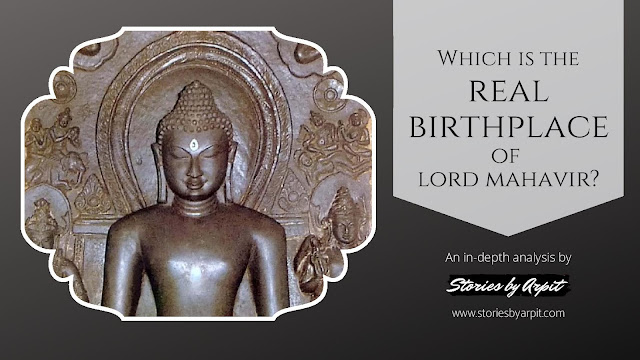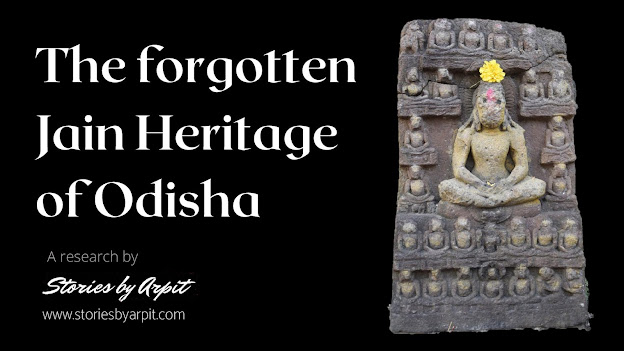20 things you did not know about Ranakpur - A photo Journey
1) In the heart of the Aravalli range, enveloped in the solitude of the
surrounding forests lies a poetry in stone – the magnificent temple of Ranakpur
on the banks of Maghai river. Majestic yet in complete harmony with nature, in
whose beautiful lap rests this magnificent monument of devotional
architecture, seems bathed in celestial bliss.
2) Dedicated to Lord Adinath, the
first tirthankar of Jainism, the Chaumukhi (4-sided) temple is a three-storeyed
marble edifice placed on a lofty plinth standing on 1,444 artistically carved
pillars. Although, Rajasthan is famous for its rich architectural heritage, the
Ranakpur Jain Temple is an exemplary work of art and architecture and is an eloquent testimony to the Maru-Gurjara style of architecture.
 |
| Mulnayak Shri Adinath Bhagwan |
3) Built by Rana Kumbha’s advisors, Sheth Dharana Shah and his
younger brother Ratna Shah the design of the temple was made based on the
divine dream of Dharana Shah wherein he experienced a vision of Nalinigulm
Vimaan (celestial floating palace) of the 12th Devlok.
 |
| The Nalinigulm Viman Praasaad |
4) Under the
holy guidance of Acharya Shri Somchandrasurishwarji Maharaja, the construction
of the divine temple was initiated in Vikram Samvat 1446 with the Khanan Vidhi,
wherein the foundation stone was laid 35 feet deep inside the earth filled with
Saptadhatu, including gold, silver and various precious gems.
 |
| Tucked in the midst of Aravalli Hills |
 |
| Intricate carvings adorning the temple |
6) It is believed that a sum of 15 crore was spent by Sheth
Dharana Shah on the construction of the temple (in that era!) which took 50 years to complete.
As per one of the legends, once the Sheth was making an early morning round to
inspect the progress of construction when he found a night-lamp burning.
Immediately he blew off the lamp to save the wastage of “ghee” (clarified
butter) . Witnessing this, one of the labourers taunted the Sheth , saying that even rich people are miserly enough not to leave a lamp burning. The Sheth in reply,
asked all the labourers to stop using water to make the bindings for the stones
and use ghee instead ! It is widely believed that ghee was used instead of water to bind the marble and sandstone slabs together.
 |
| Bird's eye view of the Temple |
7) The temple has four entrances. In the main chamber or Garbha
Griha (Sanctum sanctorum), four white
marble idols measuring 72 inches dedicated to Lord Adinath have been installed facing towards the
four different directions. Apart from the Garbha Griha,
76 small shrines, four Rang-mandaps (assembly halls), four Mahadhar Praasaads
(Principal Shrines) are situated in the four directions. A total of 84 Devakulikas
(subsidiary Shrines) stand embellishing the temple, soliciting and inspiring
man to strive for emancipation from cycles of 84 lakhs of birth and death and
attain eternal salvation.
 |
| The beautiful Rangmandap |
 |
| The majestic Meghnaad Mandap |
9) The 40 feet high pillars of the “Meghnad Mandap” have been intricately carved delicately and the magnificent dome with its delicately carved inverted lotus simply keep one's eyes glued to them. On the left of the Meghnad Mandap on one of the pillars, the statuettes of Sheth Dharana Shah and Depak have been carved with their hands folded in reverence to the lord.
 |
| The wish fulfilling Kalpavriksha Leaf carving |
10) One of the most exquisite carvings in the temple showcases
the “Leaf of the Kalpa-vriksha (wish fulfilling tree)”. It is widely believed that
this carving fulfils all human desires!
 |
| The intricate carvings on the exterior |
11) The most outstanding feature of this temple is its infinite number of pillars – 1,444 in total. The pillars have been arranged in such a manner that none of them obstruct the view of the lord ! The best feature about these pillars is that no two pillars are alike in design and sculpture.
 |
| Ancient idols inside the Devkulika's |
12) The temple also houses 9 underground vaults in which the idols
could be safely preserved in the event of a crisis. It is believed that there
are many idols still present in these cellars. It is said that after the
completion of the temple, Rana Kumbha wished to make a Kirtistambh (victory
tower) for his fame, but as divine power would have it, it remained incomplete. It is called Adhuro Thambhalo (the incomplete pillar).
13) One of the most beautifully carved idol is dedicated to Lord Sahastrafana Parshwanath depicting Dharnendra Dev and Padmavati Devi protecting the lord from the atrocities given by Kamath. The idol is carved in a single stone and 1008 hoods have been carved over the lord. The tails of male snakes and female snakes are very artistically
interwoven creating an illusion that they are interlinked.
14)Two large pairs of bells, weighing 108 kg each are housed inside the temple. It is believed that the sound of the bell lasts for a minute and reaches as far as 3 miles from the temple.
 |
| The beautiful carvings |
15) A Rayan tree (Manilkara Laxandra) which was planted by Dharna Shah, is present even today. The feet of Lord Adinath have been carved here signifying that the lord attained omniscience under a Rayan tree. In the center to the right of the temple, a Samavasaran of Lord Mahavir is very artistically constructed in marble.
16) The temple has been designed in such a way that the walls stay warm during the winters and offer coolness during summers. The temple accommodates 29 halls and 80 domes.
17) Two other temples, dedicated to the Ranakpura Parshwanath
Bhagwan (one of the 108 holy shrines of Lord Parshwanath) and Lord Neminath
Bhagwan are also situated within the temple compound. The Neminath Temple was built by Somal Porwal who was the Munim of Dharna Shah. This temple is (in)famous for it's erotic carvings depicted on it's outside walls which portray the Sansarik life of Acharya Sthulibhadra (before taking Diksha) and Kosha Vaishya.
 |
| The Ranakpura Parshwanath Jinalay |
 |
| Erotic Carvings in outer walls |
18) The eroding sweep of time led to a harsh period for the
temples. For years the temple was abandoned due to frequent wars and invasions which led to
infestation of wild animals and dacoits. During that period, the temple was
managed by some pujaris whose descendants still work in the temple till this
day. (Due to this, the pujaris have not allowed to keep a “Bhandaar” inside the
temple and all offerings made inside the temple go directly to the pujaris and
not the temple trust).
 |
| The Neminath Swami Jinalay |
19) Fortunately, in the Vikram Samvat 1953, the congregation of Sadri, handed over the administration of this shrine to Sheth Anandji Kalyanji Trust. The trust then launched an ambitious programme of renovating the temple which took 11 years to complete.
20) The temple is open to Jain pilgrims only from dawn to 12
noon post which all tourists are allowed entry. Photography is permitted at a fee of Rs. 100
per camera. Do make sure to use the facility of an audio guide which is
available in multiple languages for a small sum of money. Ranakpur is 30km from
the town of Falna, 90 km from Udaipur and 160 km from Jodhpur. The nearest railhead to reach Ranakpur is Falna Railway station and the nearest airport is Udaipur.




















Hi,
ReplyDeleteI am a proud Jain. I visited 1st time to Ranakpur temple this March - April 2016 when I was on my trip. The temple carving and the sculpture is beautiful and that is the peculiarity of our Jain temple. Our temples lives 100 years and more and they authenticity and aura remains the same forever.
But when i visited ranakpur temple I was feeling very proud that visitors in this temple are so many and they want to know more about our preachings, our Jainism history , story etc but on be other hand I felt sad. Because, the tourist who came there were touching our idols and the charan paduka which are placed on the outer pillar of the temple. Which we don't touch even if we havnt worn puja cloths. The other sadest part what I saw was ladies during their menstrual cycle were allowed to enter our Jain temple. The security at the entrance asked for the pass for camera and phone, also a strict check on fully covered body cloths. But, they didn't check for this portion which is of an utmost importance. Though it is not suppose to be asked out loud but a board or a separate line to check or intimate ladies / girls about this very very important fact. I am a girl and in my house during menstrual days we follow rituals which are laid in our Jainism. Don't take us as a backward our outdated people because we follow this menstrual rituals but, we are the ones who are deep routed to our values of Jainism.
Also, I would like to appreciate of the fact there was a Chinese Man (tourist) who wanted to do puja but he didn't have puja khes, he was helped by the people there to make him do puja and make him understand the value and importance(unity in diversity)
I would please request the authority there to have a note of this and have a strict rule for the ladies during their menstrual days.
Michammi Dukadam for any words which would've knowingly or unknowingly hurt you.
Jai Jinendra
Hi Jaina,
DeleteI extremely appreciate your thoughts on the same. On my recent visit to Ranakpur in February this year, I found 3 prominent boards in English , Hindi and Gujarati requesting the female tourists to preserve the sanctity of the Jinalay by not entering during their menstrual cycle. I also observed that all the Devkulikas were closed after 11 AM so that no tourist can touch the idols.
Marvellous write up and images :)
ReplyDeleteThanks a lot !
DeleteArpit your description about this beautiful poetry in stone is amazing blend of facts and architectural description. Always enjoy reading your articles. Keep up the good work. Jai Aadinath.
ReplyDeleteThank you so much !
DeleteThank you so much Arpit Shah, I was knowing few facts about Ranakpur but this article gave almost complete information about this Jain Temple and a great heritage.
ReplyDeleteThanks a lot !
DeletePerfect blend of mesmerising facts, lively images, rich vocabulury for describing the epitome of beauty and architectural brilliance.
ReplyDeleteLooking forward for your upcoming blogs.
Thanks a lot !
ReplyDeleteIn simple word: AWESOME.........
ReplyDeleteApt descriptions for the most beautiful temple.
Thanks a lot Avni Di !
DeleteGreat..well done arpitji for lighting up history
ReplyDeletePranam Arpitji, your blog is captivating and I am so glad you are putting so much effort to it. In this particular post the picture tagged as jambudveep seems to be nandishwar dweep to me. Can you check please?
ReplyDeletePranam. It's Jambudweep. I got it confirmed ! :)
DeleteOhk, thanks
DeleteI thoroughly enjoyed reading your article on the city of Ranakpur in pali . I will be visiting there with my cousins to participate in Ranakpur festival 2019 . Your post might help us to explore some hidden gems of the enchating Ranakpur.
ReplyDeleteWhat a beautiful article, from morning I was searching for an exact history about this temple and you made me feel so so so damn proud to be a Jain.
ReplyDeleteHats off man
Thank you
DeleteHey arpit,
ReplyDeleteWhatever chadawa you make inside temple does all that too belong to pujaris?
Yes. All the offerings made inside the temple premises go to the pujaris (not the bolis) . Refer Point 18
DeleteThis comment has been removed by a blog administrator.
ReplyDeleteBeautifully done blog Arpit. Impressive. 2 comments. You have missed the picture of evil eye pillar one which is skewed a little. Another one is about the weight of the two bells is 250 kg each, I was told when I went to visit it on 23rd September 2023.
ReplyDelete